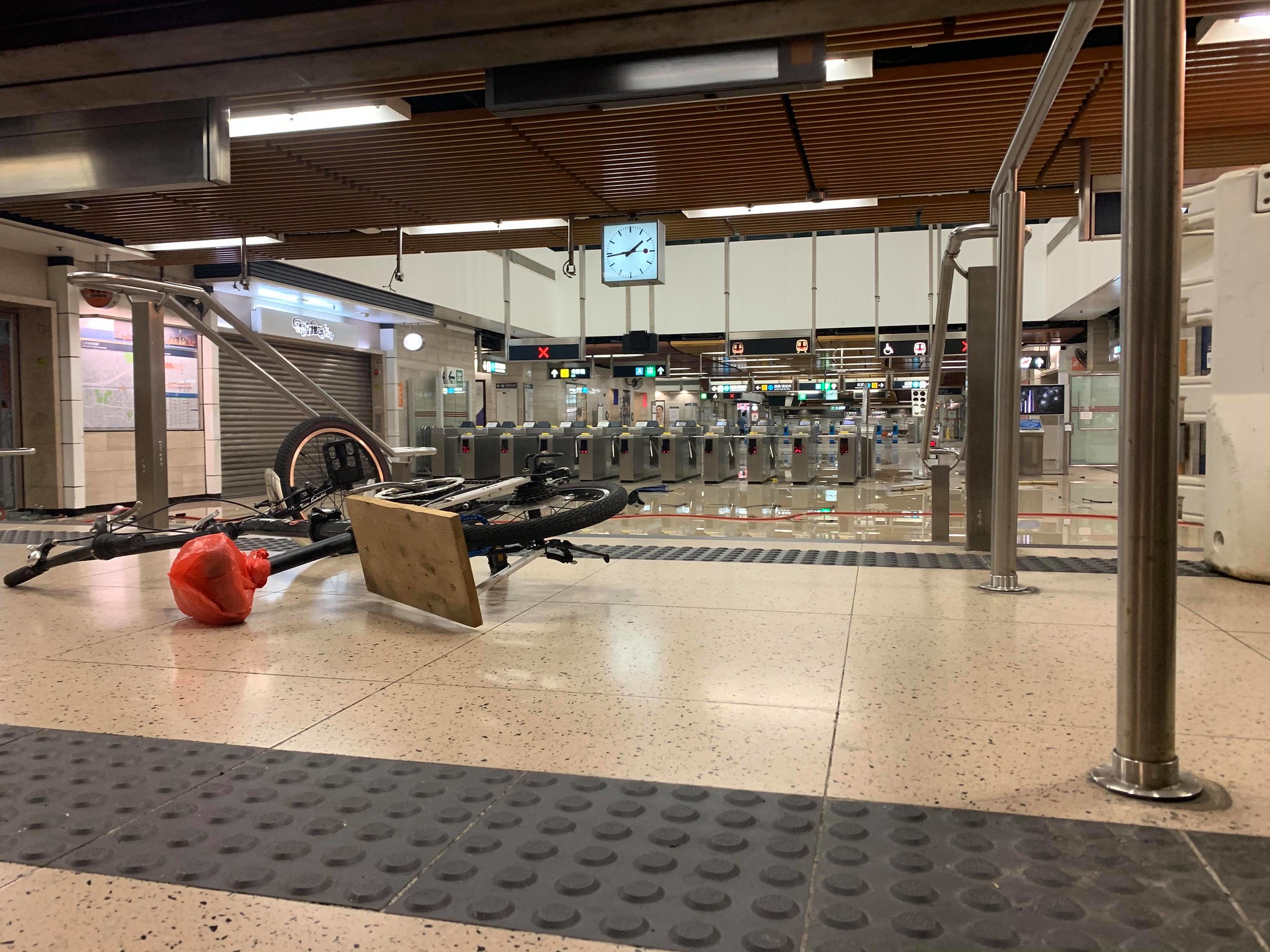
HONG KONG — All subway and train services were suspended, lines formed at the cash machines of shuttered banks, and shops were closed as Hong Kong dusted itself off and then started marching again Saturday after another night of rampaging violence decried as “a very dark day” by the territory’s embattled leader.
In a televised address broadcast as marchers in masks again took to the streets in defiance of her newly instituted ban on face coverings at rallies, a solemn Carrie Lam described Hong Kong as “semi-paralyzed” and in the grips of “unprecedented violence.”
The chief executive did not announce additional measures to quell increasing violence, beyond the ban criminalizing the wearing of masks at rallies that took effect at midnight.
She defended the legality of the measure denounced by government critics and demonstrators, and said that “to protect citizens’ daily lives and freedoms, I cannot allow the small minority of rioters to destroy that.”
“Everyone is worried and scared,” she said.
Many were fired up, too.
Shielded under umbrellas, many wearing masks, a cortege of hundreds of demonstrators clogged a thoroughfare in the central business district, carrying a yellow banner marked “Glory to Hong Kong” and shouting: “Hong Kong, resist!”
The closure of the entire MTR network that handles more than 4 million trips a day, including the express line to the Hong Kong international airport, caused major and quite exceptional disruption to the usually never-resting but now edgy and restive territory of 7.5 million people.
“From MTR to EmptyR,” tweeted activist Joshua Wong, a key player in 2014 protests that foreshadowed the past four months of demonstrations. Snowballing into a sustained outburst of anti-government and anti-China fury, the youth-led protests have plunged the international hub for trade and finance into its deepest crisis since the territory reverted from British to Chinese rule in 1997.
“Can’t go anywhere,” said Kevin Cui, a tourist from mainland China who’d planned to visit Disneyland only to discover at a shuttered subway station in central Hong Kong that the network was suspended. “This is very troublesome.”
A message on the MTR website cited staff safety and the need for repairs among reasons for the closure.
After widespread arson attacks, looting, fighting with police and beatings, the government appealed for a public shift in attitude against rioting.
John Lee, the government’s security secretary, said by not condemning violence, people are stoking it.
“What is adding oil to violence is people’s support for these acts,” he said. “What is important is that everybody comes out to say, ‘No, society will not accept violence.”’
But even many peaceful protesters say violence has become a means to an end, the only way for young masked protesters to force the government to bend.
As a group of black-clad youths in protective gear rushed past him, many carrying bamboo sticks, a property industry worker who came out with his wife Friday night to show his opposition to the mask ban expressed his admiration for those confronting police.
“I know they have done terrible things” he said. “Can you believe how brave they are?”
He gave only his first name, Alex. He and his wife, Pauline, both donned masks that covered their mouths to hit streets in central Hong Kong where clouds of police tear gas to disperse protesters also caused spluttering tourists and Friday night revelers to flee, eyes stinging.
Lam insisted when announcing the ban Friday that the measure and her use of rarely deployed emergency powers to introduce it without legislative approval were not steps toward authoritarian rule or at the behest of the Chinese government. Two activists filed legal challenges late Friday on grounds it would instil fear and curtail freedom of assembly, but a court denied their request for an injunction.
International observers worried that Lam’s resort to the Emergency Ordinance that had lain dormant since last used to quell riots in 1967 could be a harbinger of harsher measures in the semi-autonomous Chinese territory deeply attached to its special freedoms and fearful of becoming a tightly controlled city like all the others in China.
First indications were that rather than soothe tensions, the measure inflamed them.
Under the cover of darkness, masked protesters rampaged, setting fires, setting up makeshift road blocks that backed up traffic and vandalizing subway stations, China-linked business and other property.
An officer fired a single shot from his gun in self-defence after he was attacked by protesters in the northern Yuen Long district, said police spokeswoman Yolanda Yu. She said a man was wounded, but police didn’t know exactly how he got shot. A police official, who requested anonymity because he wasn’t authorized to speak to the news media, said the victim is 14. A Hospital Authority spokesman said the teen was in serious but not critical condition.
The teen became the second victim of gunfire in the protests that began in June. An 18-year-old protester was also shot at close range by a riot police officer on Tuesday.
———
Associated Press journalists Eileen Ng and Katie Tam contributed to this report.